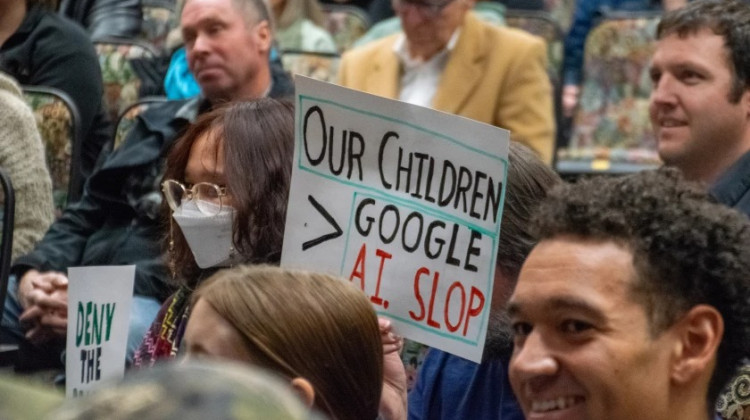
The winter before last, during the 2018-2019 season, Indiana tied with South Carolina for the lowest percentage of colony losses in the country.
Seth Tackett/WTIUHoney beekeepers in the U.S. lost about 22 percent of their colonies this past winter. While that might not sound good, the Bee Informed Partnership says that’s the second lowest winter colony loss it’s seen in more than a decade.
Indiana farmers need those bees to pollinate their crops.
Nathalie Steinhauer is the research coordinator for the partnership. She said honey bees are less able to outrun pests in the winter time.
“Beekeepers expect that so they can plan for it and they can have their management ready,” said Steinhauer.
The winter before last, during the 2018-2019 season, Indiana tied with South Carolina for the lowest percentage of colony losses in the country.
Ross Harding maintains about 220 colonies in central Indiana — including hives on the roof of WFYI, the public media station in Indianapolis. He attributes Indiana’s success to beekeeper education.
“We have a really good community of local clubs and organizations that really teach a lot of what's going on now in beekeeping to have a successful year," he said.
Dave Shenefield, president of the Indiana Queen Breeders Association, said the state saw an influx of new beekeepers in the past decade. At first, he said some of them weren't controlling varroa mites — the honey bee’s number one pest.
But it’s not time to celebrate yet. Steinhauer said even though there were fewer colony losses in the U.S. this past winter, it followed the highest summer loss her group has ever recorded.
Overall, annual bee colony losses in Indiana have been trending up slightly in the past decade.
Steinhauer said to help bees, landowners can plant native flowers and use pesticides in a responsible way.
“If we improve the environment, we're improving the environment not just for the honey bees, not just for native bees, but for all the diversity of bees, of pollinators, and in the end is also improving the environment for ourselves,” she said.
Steinhauer said it’s important to note that a colony loss doesn’t necessarily mean a population loss. Colonies are often replaced. She said honey beekeepers can split healthy colonies in half and introduce a new queen to one of the halves — but they have to have the time and resources to do so.
READ MORE: Beekeepers, Researchers & State Lawmakers Agree: We Need The Bees
A colony loss often means a financial loss for beekeepers. Harding said a beekeeper can make $1,000 off of one strong colony. If your hive equipment gets damaged, say by wax moths, Harding said that could be another $500 to $1,000 loss.
Shenefield said beekeepers that monitor their hives for varroa mites are more likely to see their colonies survive. The problem is, he said, commercial beekeepers often have hundreds or thousands of colonies that they look after — making it difficult to check each hive.
Harding added that when you have the extreme heat Indiana has been experiencing lately, beekeepers often want to spend less time in hot bee suits.
Shenefield said the state could certainly use more commercial beekeepers. Those interested in beekeeping can find resources through the Beekeepers of Indiana webpage.
The Bee Informed Partnership is a nonprofit research collaborative funded by a number of supporters including the USDA, California Almonds, and Project Apis m. — which is partially funded by Bayer.
Contact reporter Rebecca at rthiele@iu.edu or follow her on Twitter at @beckythiele.
Indiana Environmental reporting is supported by the Environmental Resilience Institute, an Indiana University Grand Challenge project developing Indiana-specific projections and informed responses to problems of environmental change.
 DONATE
DONATE







 Support WFYI. We can't do it without you.
Support WFYI. We can't do it without you.